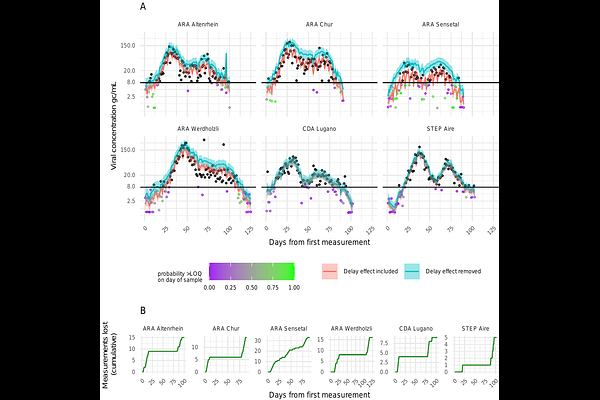Post-sampling degradation of viral RNA in wastewater impacts the quality of PCR-based concentration estimates

Post-sampling degradation of viral RNA in wastewater impacts the quality of PCR-based concentration estimates
Munday, J. D.; de Korne-Elenbaas, J.; Gan, C.; Lison, A.; Riou, J.; Ort, C.; Julian, T. R.; Stadler, T.
AbstractSuccessful wastewater-based infectious disease surveillance programs depend on regular, reliable molecular detection of nucleic acids in municipal wastewater systems. This process is challenged by the gradual degradation of the viral content of the wastewater over time. Testing protocols are complex and often cannot be performed on site, resulting in delays between collection and testing. The evidence of continued degradation of viral RNA when stored at low temperatures is currently limited to a small number of studies with mixed results. Taking advantage of variable delays between sample collection and processing, we used a Bayesian temporal model and data from two winter periods of a national surveillance program in Switzerland to determine the rate at which the measured viral concentrations of four respiratory viruses declined as a result of RNA degradation between sample collection and processing. We found evidence of substantial degradation between the collection and processing of samples with daily rates of up to -0.28 (-0.38 - -0.19 95\\% CrI). We established that reduction in viral concentrations resulting from post-sampling degradation was responsible for a number of measurements falling below quantifiable limits. For one treatment plant, we estimate that 39 measurements fell below the limit of detection due to RNA degradation over the course of a single season. Measurements are more likely to be lost early in the seasonal epidemic when concentrations are still low. This delays consistent reliable measurement and sets back epidemiological assessments relevant to public health management strategies.